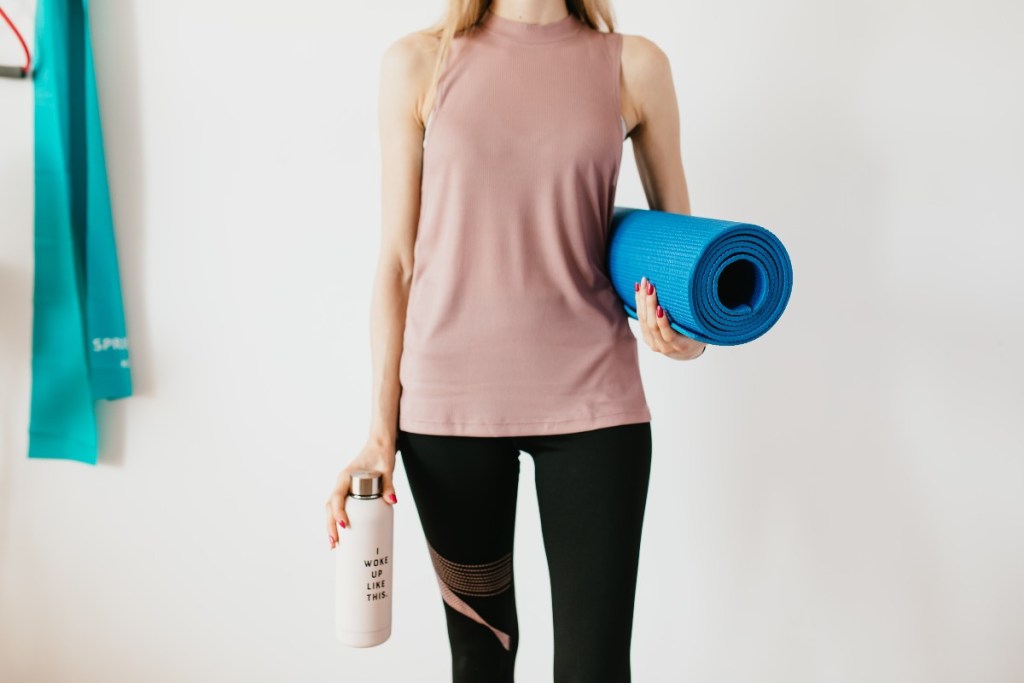You’ve probably heard of Pilates, maybe because of its association with exclusive studios and celebrity workouts. However, Pilates is a super accessible workout, with apps, including Peloton, YouTube, and Instagram, offering classes and techniques to assist your wellness journey.
So what is Pilates exactly, and what does the exercise entail?
Because of its association with millennials’ favorite studios and influencers, many view Pilates as a new-age fitness routine. However, Joseph Pilates actually developed it at the turn of the last century. These exercises strengthen the core and promote deep breathing and mindfulness. There’s not much repetition, nor will you use heavyweights, resulting in an engaging and surprisingly relaxing routine.
Pilates relies on six principles: centering (bringing awareness to your core), concentration, control, precision, breath, and flow. Ready to dive in? Roll out that yoga mat and let’s get started.
Benefits of Pilates
Maintaining a strong core is about so much more than flexing six-pack abs. First, the core muscles, including the glutes, hips, pelvic floor, and lower back, are essential to keeping good posture and balance. This can reduce aches, pains, and the risk of falls and other injuries. You’ll certainly work out your abdominal muscles, but you won’t just be doing an hour’s worth of crunches.
This workout also includes bridges, leg circles, clams, side-lying leg lifts, and more moves that will strengthen all of these muscles, helping you to sit up straight and move more gracefully. Though some Pilates poses require flexibility, it’s okay if you’re not a human pretzel. In fact, the workout will actually help to increase mobility over time.
Pilates doesn’t just focus on your physical center, either. It also asks you to find a mental center. To truly embrace Pilates, you must maintain a strong focus on your breathing, which can distract you from everyday stresses and keep you engaged in the movements. Because this reduces anxiety, this workout can subsequently improve heart health and sleep and even lower your risk for some cancers.

Equipment for Pilates
Pilates often boosts functional strength, mainly using bodyweight, but there a few pieces of equipment you can add to your routine to maximize the benefits of this exercise.
- A mat. Having your own mat is the most hygienic option. Plus, Pilates mats are typically thicker and larger than yoga mats, so bringing your own ensures you won’t have to use a thin, old studio mat.
- Pilates bands. These resistance bands will help strengthen and lengthen your body.
- Magic circles. These rings are flexible, lightweight, and typically about 13 inches in diameter to provide a slightly different type of resistance than the bands.
- Weights. Opt for 1 to 5 lb. weights — enough to add a challenge, but not so much that it becomes a lifting session.
- Pilates ball. These large balls will strengthen your core and improve your posture.
Shoes aren’t required at Pilates classes — in fact, many studios will ask you to remove them at the door. Last, dress for success in comfortable clothing that allows you to stay nimble, like a form-fitting tank top and leggings.
Is Pilates right for me?
Working out should be enjoyable, so if you like Pilates, keep doing it! That said, it’s always a good idea to talk to your doctor before starting any workout regimen to ensure it’s right for you. You should especially speak to a healthcare professional if you:
- Have a heart condition
- Are prone to fainting or seizures
- Are pregnant or recently were (Many people get diastasis recti during and after pregnancy, and working the abs can exacerbate this issue)
- Recently had any surgery, particularly abdominal surgery
- Are recovering from a broken bone
Pilates isn’t cardio, so for best results, make sure you’re also spending some time running, swimming, or cycling. Though it’s not a high-impact workout, you’re going to move in a Pilates class in a lot of challenging ways. While this can be both physically and mentally taxing, your improved strength, flexibility, and mental wellness are well worth it. Whether you drop by the studio or roll out your mat in the living room, Pilates is a great way to strengthen and stretch your whole body, especially if you’ve been spending a lot of your time behind a desk.
BlissMark provides information regarding health, wellness, and beauty. The information within this article is not intended to be medical advice. Before starting any diet or exercise routine, consult your physician. If you don’t have a primary care physician, the United States Health & Human Services department has a free online tool that can help you locate a clinic in your area. We are not medical professionals, have not verified or vetted any programs, and in no way intend our content to be anything more than informative and inspiring.




